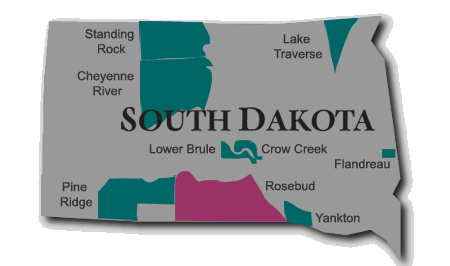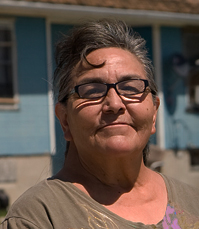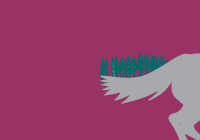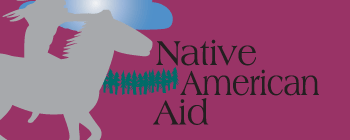|
|

 |
About the Sicangu Sioux. Rosebud Reservation is home to Sicangu Sioux, one of the seven tribes of the Lakota nation. The Lakota were traditionally the ultimate representative of the Plains Indian culture, with organized bands, dependence on the buffalo for food, clothing, etc. and emphasis on warring and raiding.
Lakota, Dakota and Nakota speakers make up the Siouan language family, which inhabited over 100 million acres of what is now Minnesota, parts of Wisconsin, Iowa and the Dakotas in the sixteenth and early seventeenth century. By the mid-seventeenth century, Siouans began moving farther west, in reaction to conflicts with the Cree and Anishabe and to the lure of the vast buffalo herds on the Great Plains. The Lakota acquired horses around 1740 and shortly thereafter crossed the Missouri River. They arrived in the Black Hills area around 1775, and at about the same time they divided into seven tribes, one of which was the Sicangu.
History of the Reservation. Under terms of the Ft. Laramie Treaty of 1868, the Lakota were placed on one large reservation that encompassed parts of North and South Dakota and four other states. After defeating the Indian tribes in the Plains Wars of the 1870s, the United States confiscated 7.7 million acres of the Sioux’s sacred Black Hills and created several smaller reservations. The Sicangu were assigned to live on the Rosebud Reservation.
Life on the Reservation: The Rosebud Reservation is economically depressed and ranks second (after the Pine Ridge Reservation) in per capita income on Plains Reservations. Unemployment sometimes reaches over 80%, and the lack of job opportunities leaves a devastating mark on Rosebud families. Many heads of the family are forced to leave the reservation to seek work. Extended families pool their meager resources together in order to try and provide their basic needs.
Indian Country Today has reported that one out of three residents of the Rosebud Reservation was homeless and that six out of ten live in substandard housing. Overcrowding is common as most families will not turn away even extended family members in need of a place to stay. Sadly, gangs and other social ills impact some of the youth struggling to come to terms living in an environment with an uncertain future.
For many Rosebud Sicangu, it is a day to day challenge to get access to even the most basic food and medical care. Families often live far from community centers in remote areas with little access to transportation. Many roads are often in poor repair and can only be navigated by four-wheel drive vehicles. How can I help?
Rosebud on the map: Mallette, Todd, Tripp and Lyman counties, South Dakota. The reservation contains almost a million acres, about half of which is owned by the Sicangu tribe.
Tribal enrollment: 15,438  |
|
|















